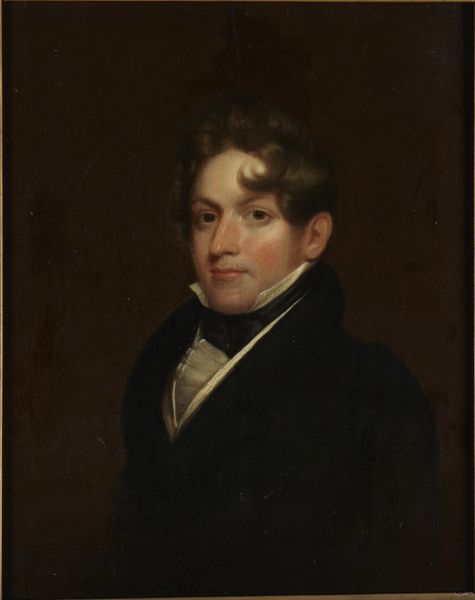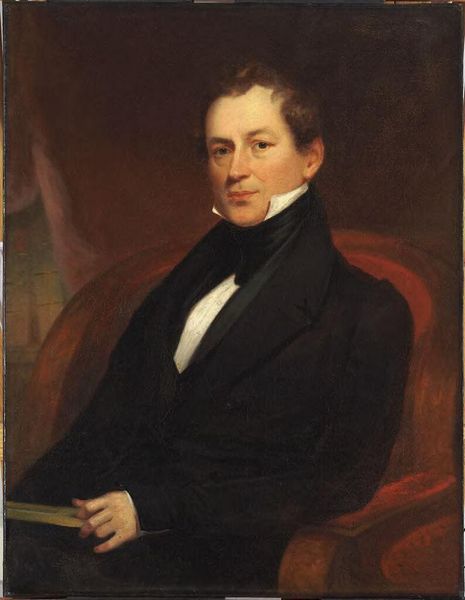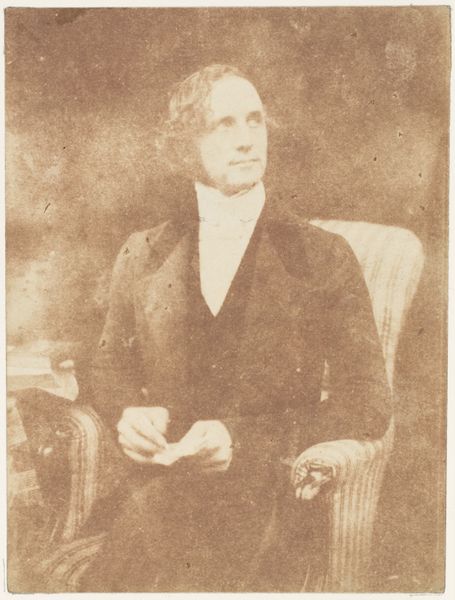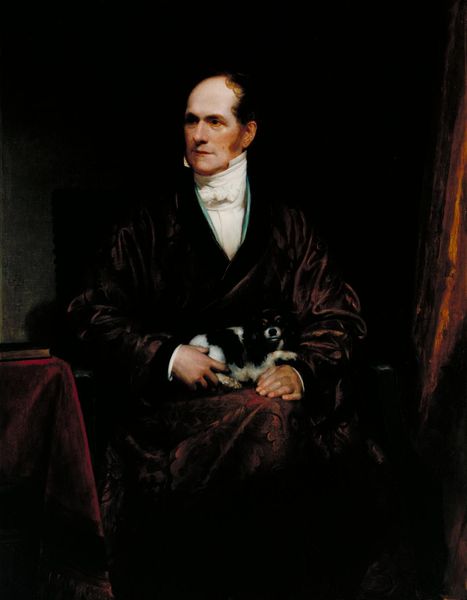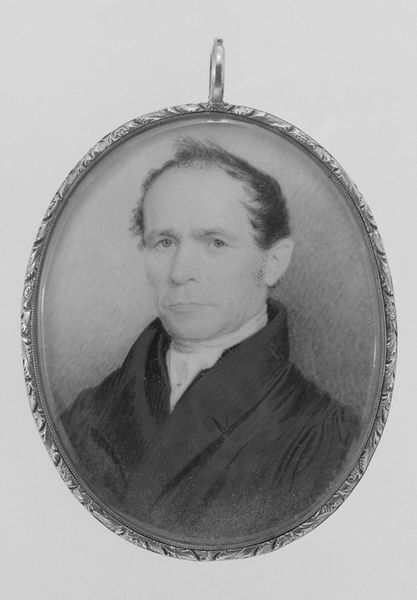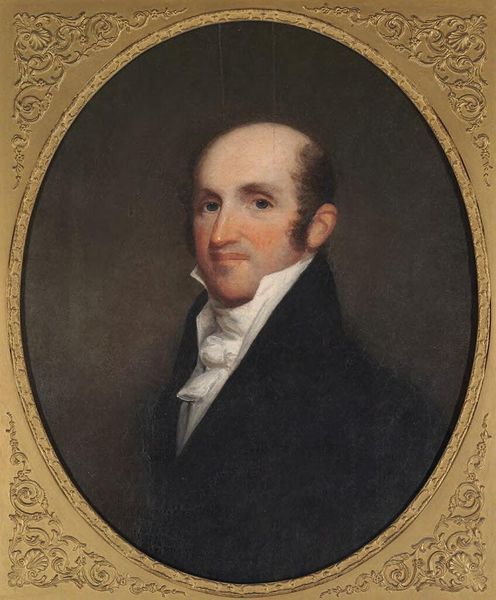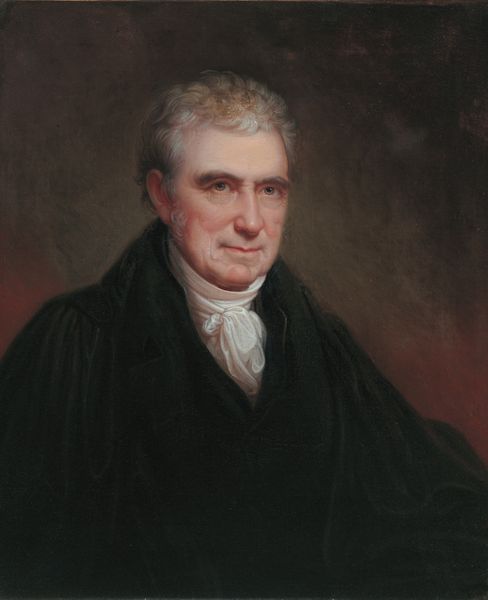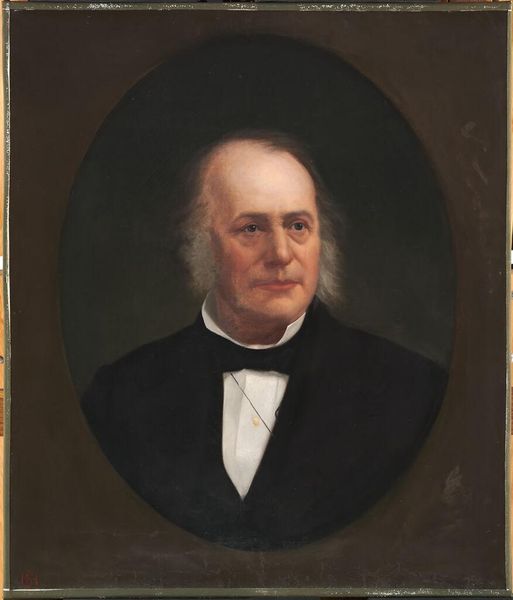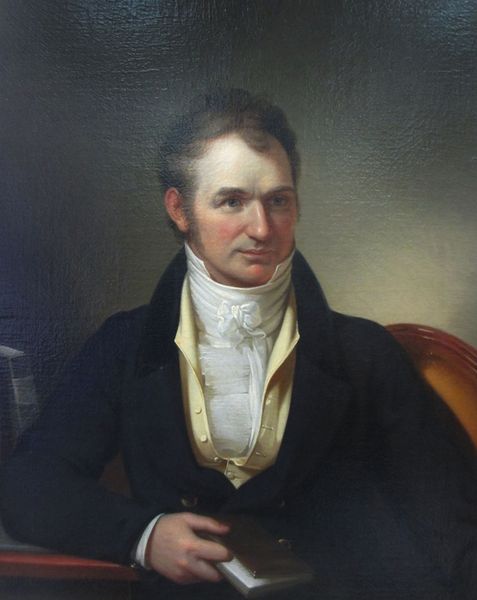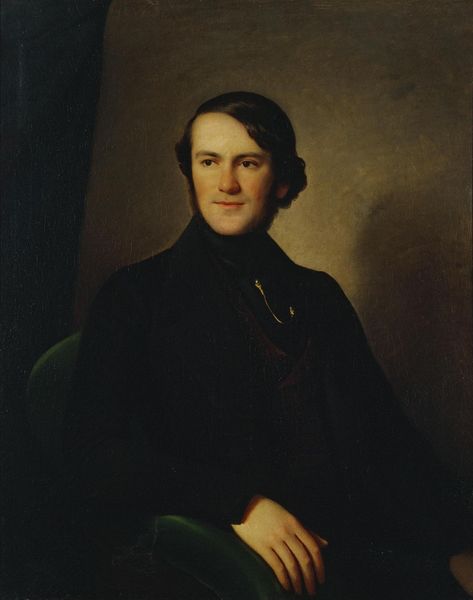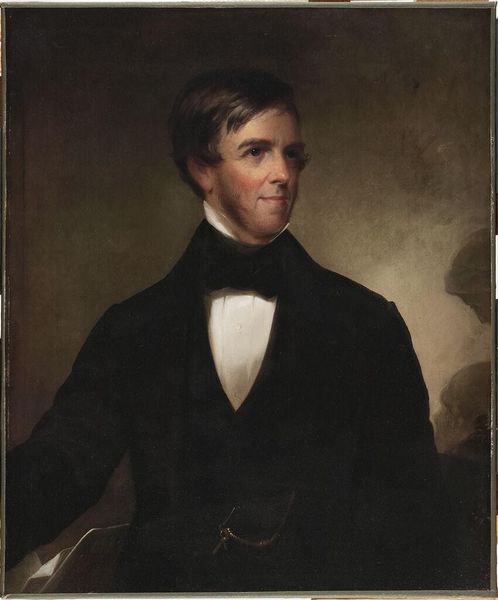
oil-paint
#
portrait
#
oil-paint
#
romanticism
#
academic-art
Copyright: Public domain
Editor: Here we have Asher Brown Durand's oil painting, "Portrait of Thomas Cole". The overall somber and almost muddy colors make it feel like a heavy image, despite the sitter. What can you tell us about it? Curator: Well, consider the labor involved in creating this portrait. Oil paint itself requires pigment sourcing and careful mixing. Who benefitted from this production? Landowners profiting from raw materials? Skilled artisans crafting the paint? It is a reflection on social stratification even at its most basic production level. Editor: That's a really interesting perspective. So, you're less focused on the artistic merit and more on how the painting came to be and who it benefited? Curator: Exactly! Durand wasn't just representing Cole; he was participating in a network of production and consumption. Academic art's prevalence stems not just from artistic ideals but the social infrastructure—academies, patrons, material suppliers—that sustains it. Even Cole's Romantic style becomes a commodity here. How do we grapple with its impact? Editor: It almost sounds like Cole, the artist being portrayed, is an ingredient too, in a way. Like raw material, like the pigments. Curator: Precisely. His likeness, his brand, so to speak, becomes part of the production chain. Do you see how the artistic intent becomes interwoven with broader economic and societal forces? It reframes the notion of artistic creation, doesn't it? Editor: I definitely do. I'd never considered portraiture this way, it changes the art historical interpretation from a narrative to a kind of critical supply chain analysis. Thanks! Curator: My pleasure. Always remember that art objects aren't just beautiful creations; they're also products of their time, shaped by material realities and labor.
Comments
No comments
Be the first to comment and join the conversation on the ultimate creative platform.


